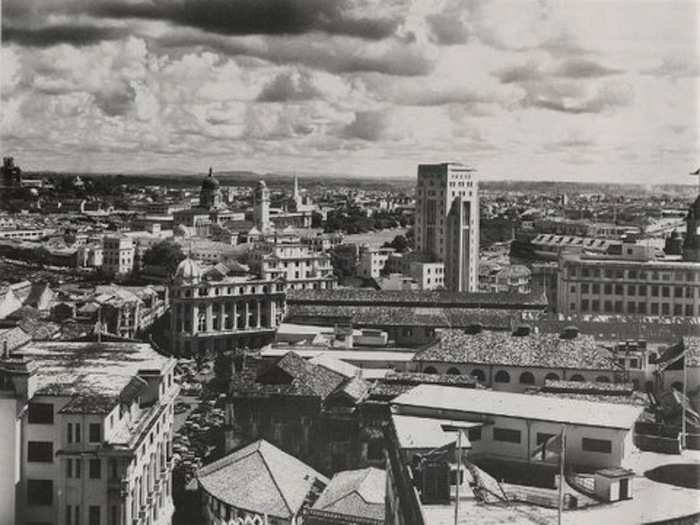- Home
- stock market
- South Korea Looked Just Like North Korea 50 Years Ago [PHOTOS]
South Korea Looked Just Like North Korea 50 Years Ago [PHOTOS]
Here's Seoul in the 1960s.
![South Korea Looked Just Like North Korea 50 Years Ago [PHOTOS]](/_next/image?url=https%3A%2F%2Fstaticbiassets.in%2Fthumb%2Fmsid-21199868%2Cwidth-700%2Cheight-525%2Cimgsize-32802%2Fheres-seoul-in-the-1960s-.jpg&w=3840&q=75)
Korea was mire in an image as a war-ravaged backwater.
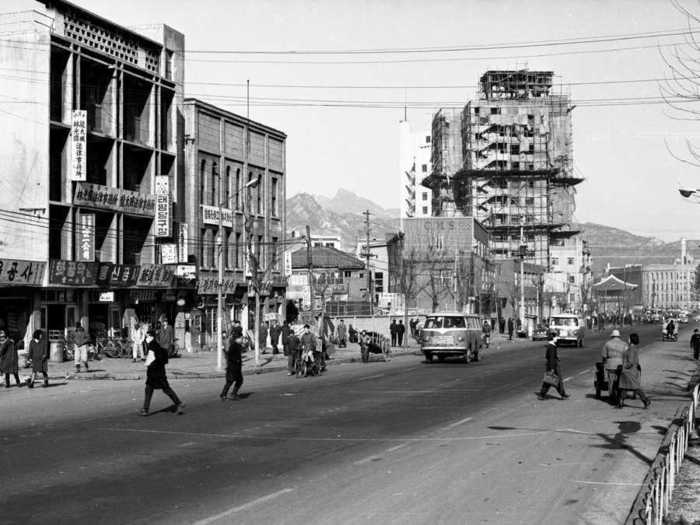
"Sunny day, with a dusting of snow still around, looking north toward City Hall on Taepyong no 2Ga, about halfway from Namdaemun. Duksoo Palace gate on right." Seoul, Dec 1965
But much like its other neighbors in Japan, South Korea eventually began to rebuild.
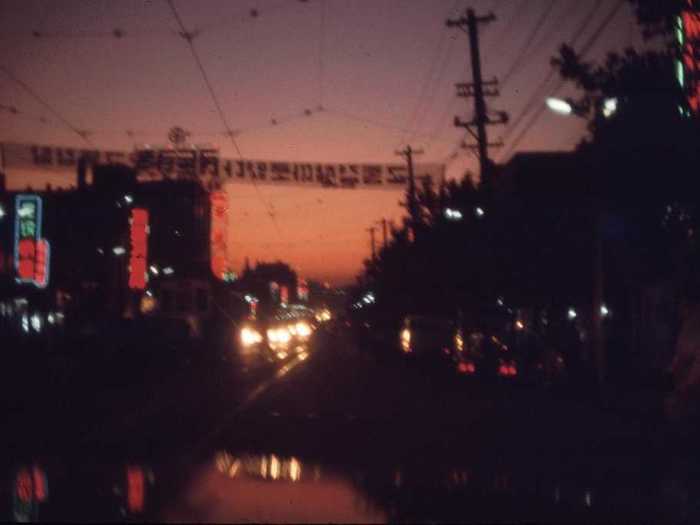
"On the way to see Hello Dolly, on its Asian tour, starring Mary Martin." Seoul at night, Nov 1965
In 1966, Hilton and Intercontinental pledged to open their first hotels in Seoul.
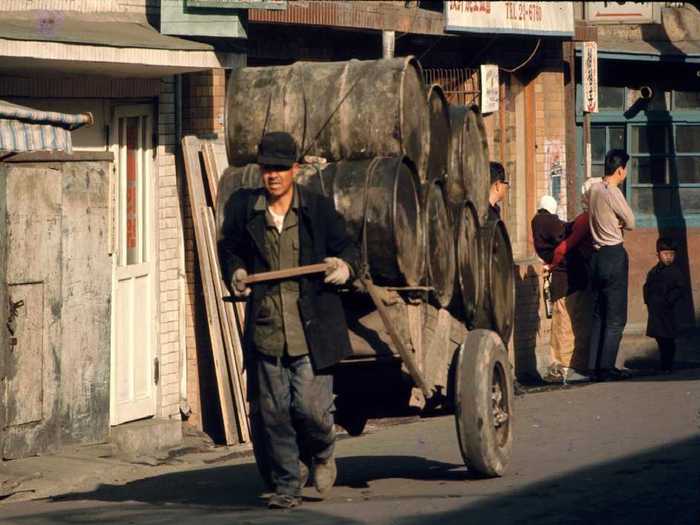
"Amazing what got moved by hand back then." Seoul, 1966
Source: New York Times
"Chosun Hotel, a Seoul Landmark, Will Be Razed for a new Skyscraper," ran a New York Times headline in 1966.
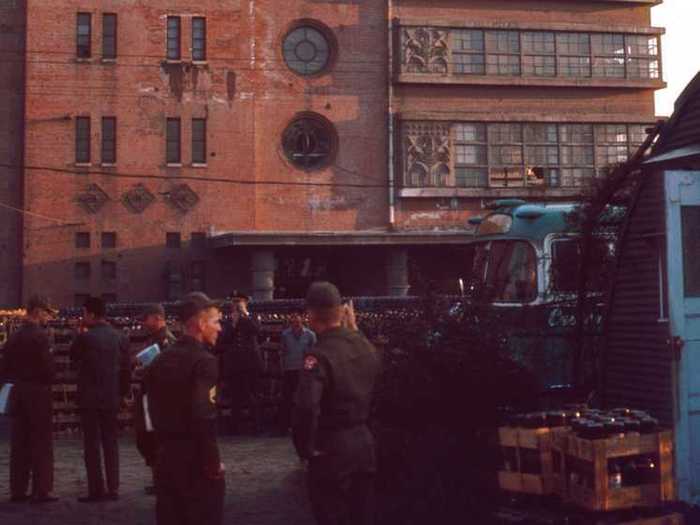
"Some war damage evident on building." Crown Brewery, Nov 1965
Source: New York Times
Four years later, another story ran with the hed, "Skyline of Seoul Rises Proud and Gleaming."
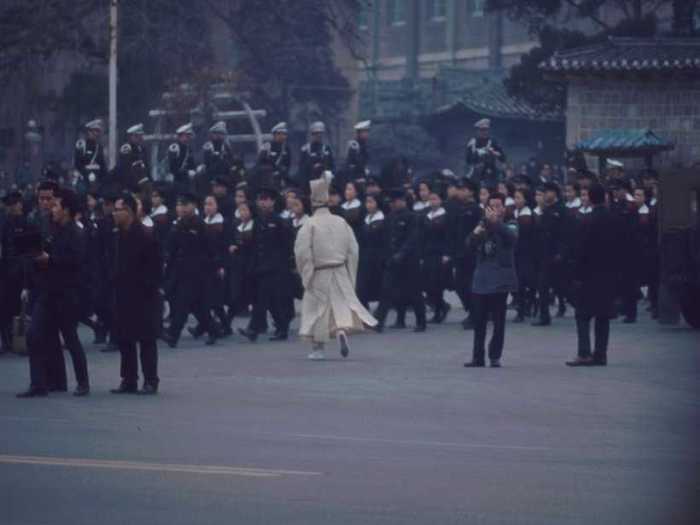
"Cortege emerging from Tonwhamun." Seoul, 13 Feb 1966
Source: New York Times
But there was still a long way to go. As of 1971, 74 percent of Seoul's citizens still relied on buses.
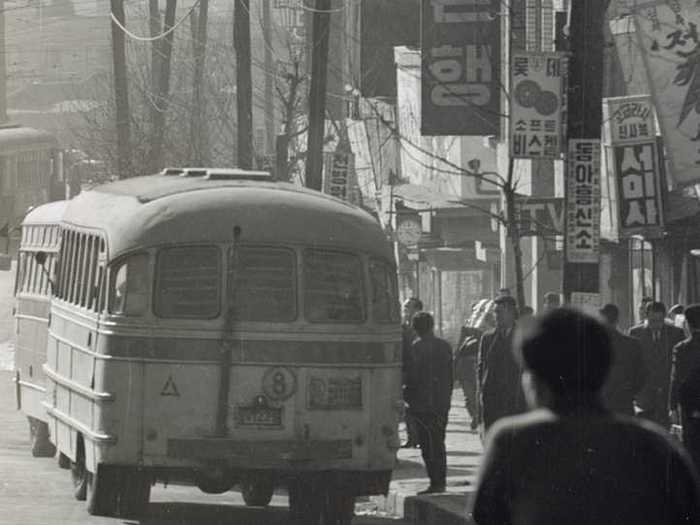
"Street scene, Seoul, with bus and Gook min Bank." Seoul, late 1966
Source: New York Times
The man behind this transformation was Park Chung-hee, a controversial figure who'd taken power in a coup.
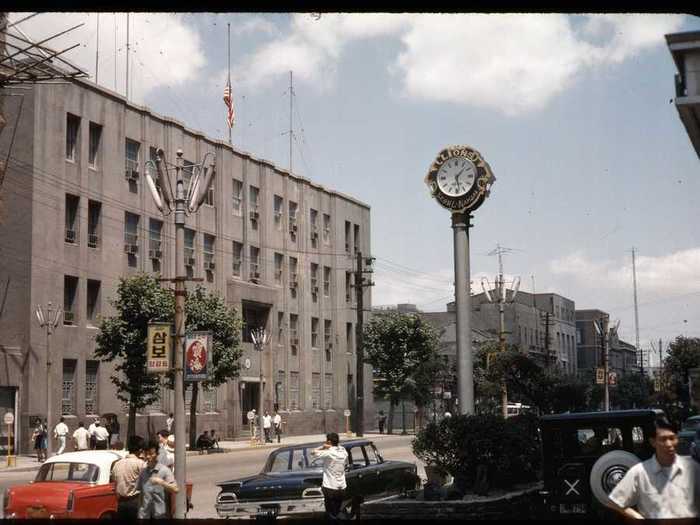
"US Embassy. Flag at half staff probably for Adlai Stevenson, which would date this as after 14 July. Bando Hotel on right. Building under construction extreme left was to be Samsung HQ, as I remember." Jul 1965, Seoul
Viewed by many as authoritarian, his reforms nevertheless led to what became known as "The Miracle On The Han River."
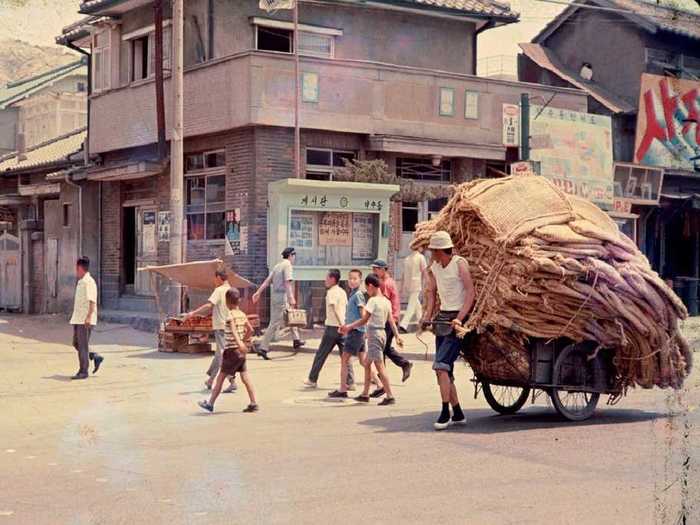
"Yaksu dong town offices." Seoul, 1965
Park initiated a series of "five year plans" designed to make the country more self reliant.
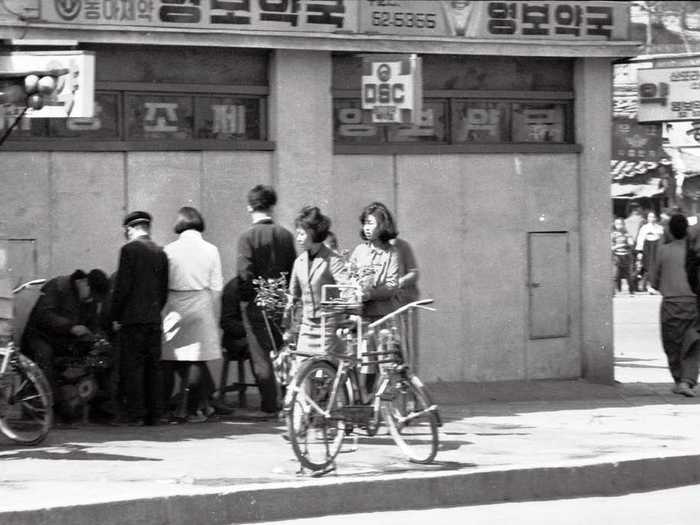
"Street scene somewhere." Seoul, 1966
Between 1960 and 1970, the value of the South's exports grew from $30 million to $1 billion.
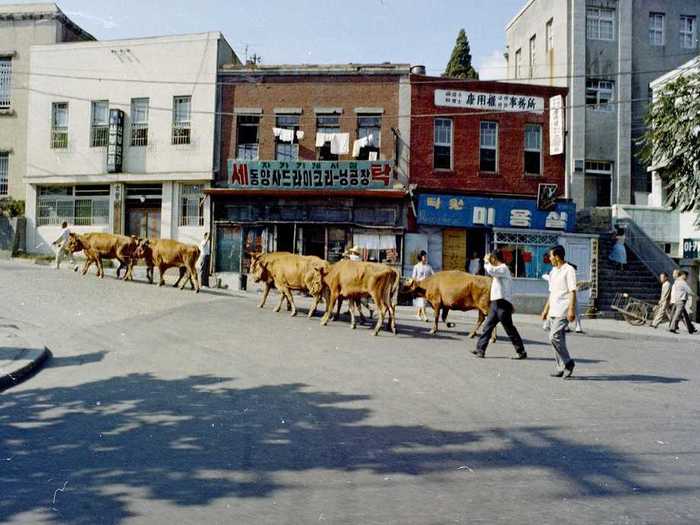
"Cattle drive through somewhere in the northwest part of Seoul. Where are they going?. We had to wait before we could turn right." Seoul, Jun 1965
The country's major industrial base was textiles.
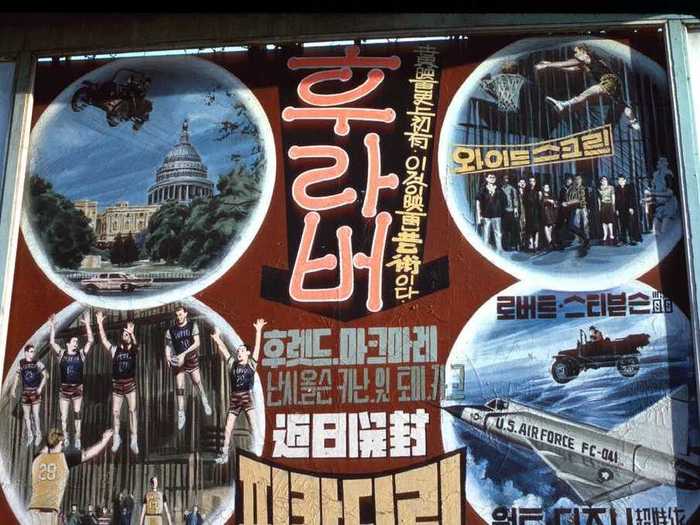
"An orthographic nightmare. No possible way to transliterate this into hangul Hoo RA baw (Flubber), starring Hoo REH duh Ma kuh MA reh (Fred MacMurray in The Absent minded Professor). "Piccadilly Theater, 1966
Source: New York Times
Electronics also played a major role, especially after Samsung entered the field.
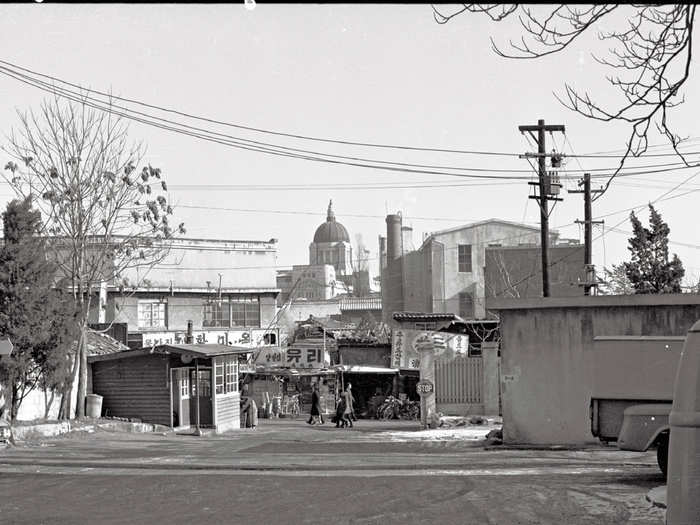
"Taken from the parking lot of the Naeja Hotel. Capitol in the center. The Naeja had good jazz on weekends on its roof garden." The Capitol, from Naeja dong, 1965
Source: New York Times
Samsung was founded a generation earlier as a grocery company
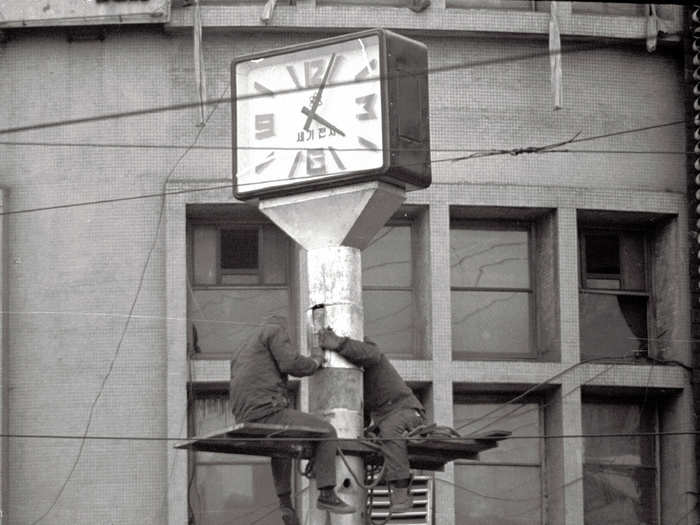
"Repairs, clock." Seoul, 1966
Source: New York Times
In 1979, Park Chung-hee was assassinated.
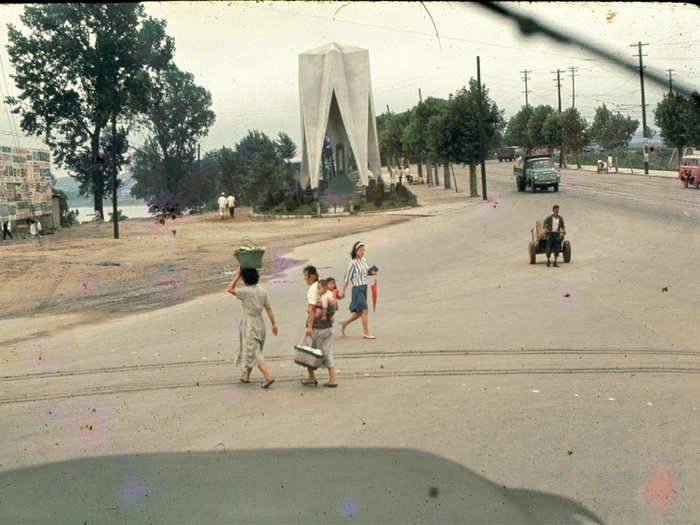
"Yongdungpo, just over the bridge" Seoul, Aug 1965
But the country remained under a nominal dictatorship. In 1980, at least 191 people were killed during democracy protests.
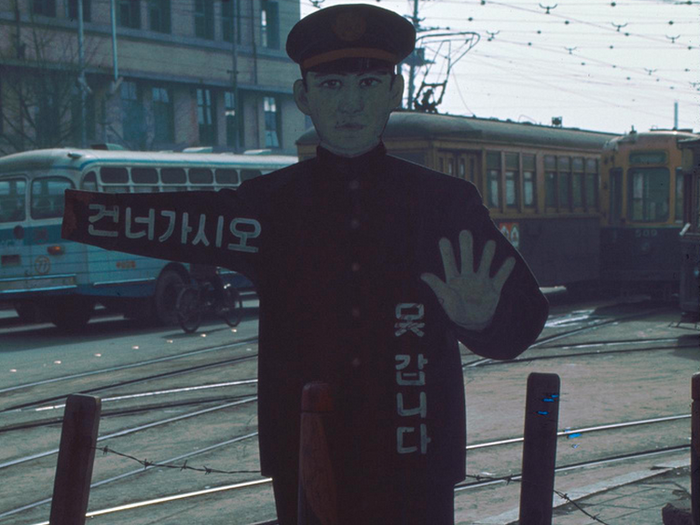
"Disabled crossing sign. Near East Gate? the light is from the other side, so we're looking southerly or southwesterly."
Seoul, Apr 1966
Source: New York Times
But the economic base Park had created remained, and by the early 80s companies like Hyundai and Daewoo had taken off.
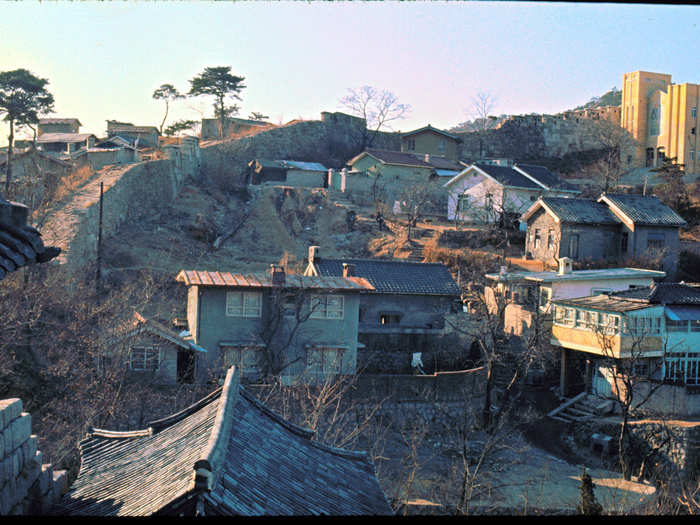
"View Southeast from North Gate ??? (extreme left). Is that church still there?" Seoul, Dec 1966
Source: New York Times
In 1981, Seoul won its Summer Olympics bid for the '88 games. It was a watershed moment signaling the South had arrived.
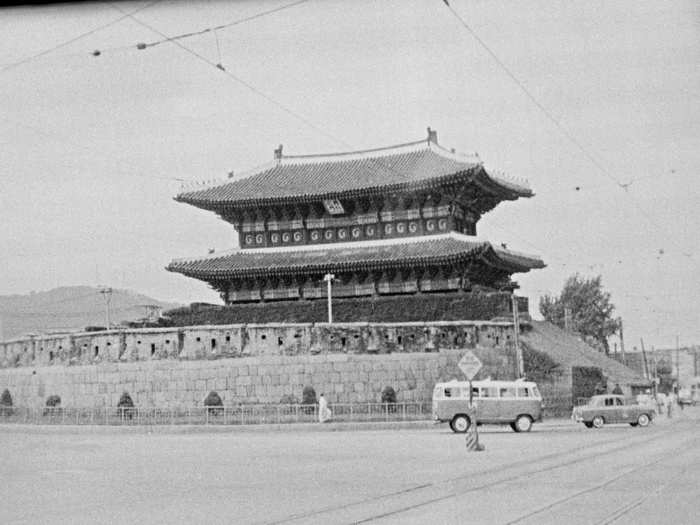
"Tongdaemun, looking west." Seoul Jun 1965
Source: New York Times
In 1985, the "63 Building" opened in Seoul. At 817 feet, it was the tallest in all of Asia.
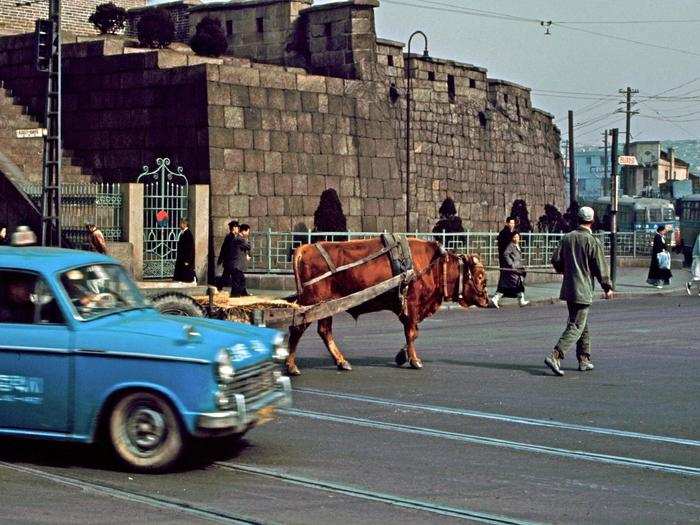
"My favorite of the gates. The traffic was more interesting in those days. Looking East."
Tongdaemun, Apr 1966
Source: World Architecture Map
Perhaps the best indicator that Seoul had by the end of the '80s become fully developed is a travel piece the Times did in 1989...
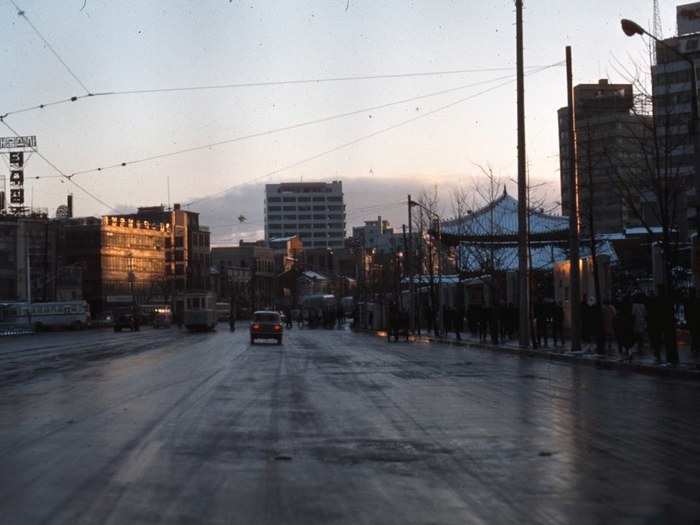
"City Hall Square, Looking toward South Gate. Duksoo Palace gate on right." Seoul, Dec 1965
"EVENING is descending on Pagoda Park, a meditative oasis along one of Seoul's fiendishly thriving boulevards," it began.
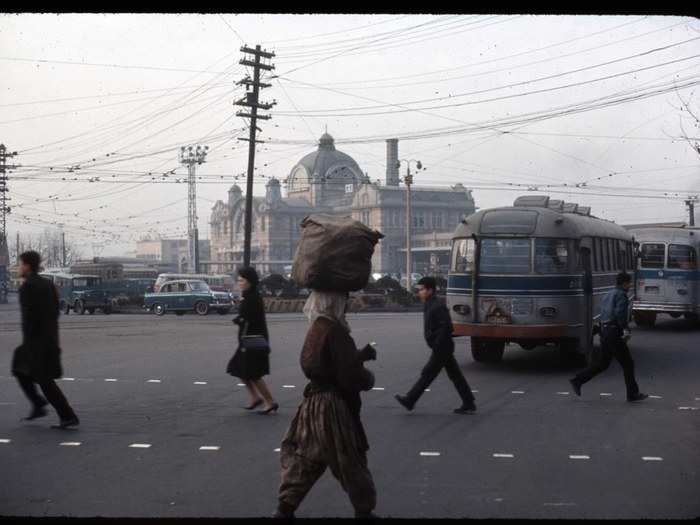
"Central RR Station." Seoul, 1966
Source: New York Times
And continues: "A true Phoenix risen from war's ashes, this city can hardly be blamed if it isn't an esthetic showplace."
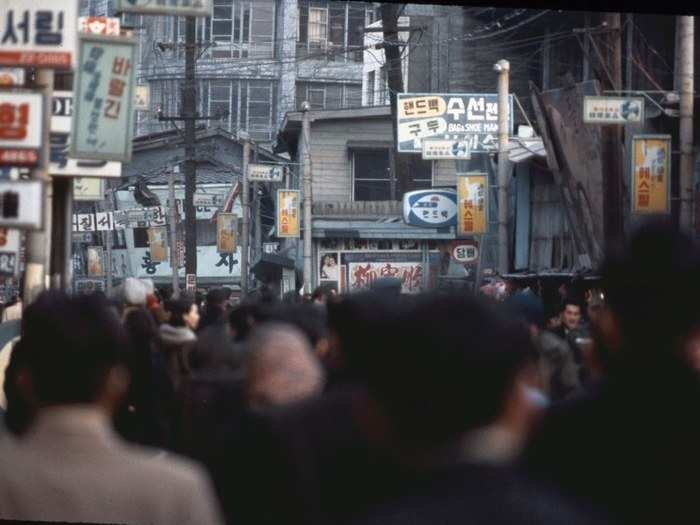
Seoul, 1966
Source: New York Times
Advertisement
